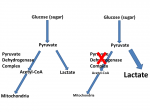One of the potentially most important tweets from the conference in my opinion:
Yes, this seems like a pretty big deal, repeating
what they said in Norwegian earlier this month (as reported in
that Cort blog, previously linked), but now presented directly in English.
Sounds like a pretty compelling justification to (re)examine Dr Myhill et al claims of finding translocator protein autoantibodies blocking ATP out of and/or ADP into mitochondria, in a subset of her tested patients reviewed. As
@Hip calls for in
his thread summarizing those 3 papers. I've no idea if Fluge/Mella, Davis, etc, can already rule such things out? Or what percentage of Myhill's subjects were supposed to have significant problem with these auto-antibodies, if that could match up with the number of Rituximab responders...? (Without B cells making these anti-bodies anymore.)
The depth, breadth and consequence of Øystein Fluge and Olav Mella's work is huge. Like they say, if it had been achieved in a well known US academic location there would have been bigger waves by now. Interesting to know they have been working on
@ChrisArmstrong's metabolomics insights for a year:
Digging back through Cort's one man Tweet deluge from the last few days, we're inundated with so many different instances of great, direct observations of organic malfunctions going on. But what's most encouraging is the sound of collaboration between researchers, with more open publications and powerful new (commercially available) medical tools (plus the space-tech level stuff Ron Davis is spearheading). Reference to the trajectory of the human genome project sounds excitingly fitting - that got only 1% of the way done after 7 years of the 15 year project, but then busted out it's first complete draft 4 years after that! (Following exponential gains in sequencing and international collaborations.)
I think this Tweet about Hanson finding *increased* (gut) viral diversity is tantalizing.
Although, studying such things is so cutting edge (even compared to now seemingly accepted decreased bacterial gut diversity), I've no idea if anyone will have a clue what to make of it...? If there's something big and unsubtle going wrong, maybe that'll be something. Maybe gut is a promising site for 'latent' viral problems? Anti-virals helping here?
I think it's cool that Michael
VanElzakker is in the mix. His hypothesis that viral infection of the vagus nerve itself, which normally detects systemic inflammation to get the brain and body to throttle activity appropriately, makes it massively sensitive to an amount of cytokines that can not be found in the blood. Hopefully he's progressing towards some actual studies...
Of course, there was the first direct sighting of the brain's lymphatic system, earlier this year (I think), which was presumably good material for
Dr Raymond Perrin. (Personally, I've felt my lymph nodes weren't quite right since going to the doctor about them as a teenager, but never enlarged/sore, just firm and ever pressent.) Personally expect this is more just a part of the body wide fall-out from more fundamental problems.
Then some kind of disheartening insights, of seemingly permanent, long term degeneration:
But sorry, I've gotten carried away up there... Really hoping that Cort (and others) will be able to write up a whole bunch of these talks and information in more detail.




